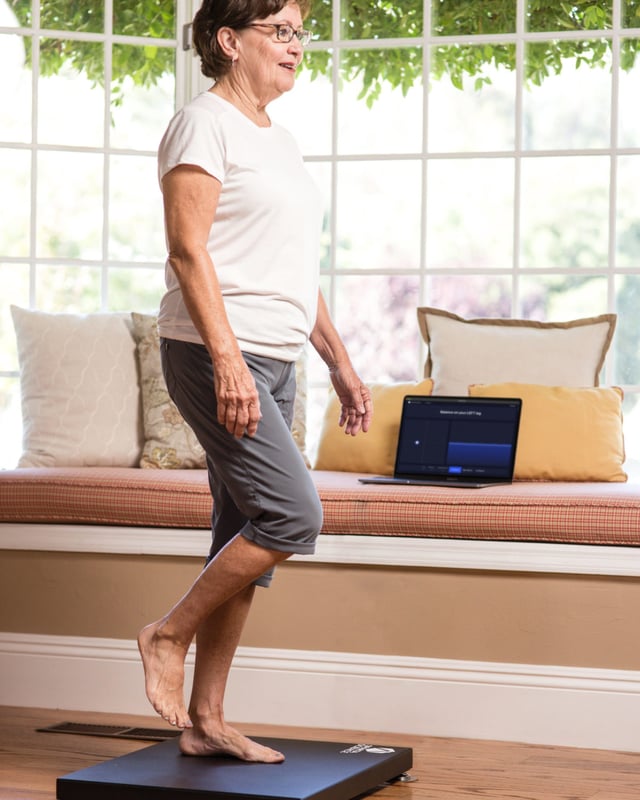
By Andrew Smith
Today I’m excited to announce that Inflect Health (Virtuity’s innovation hub) has invested in Sparta Science, a Silicon Valley startup that has developed a movement vital sign that reduces the impact of injuries and movement-related disorders.
The Sparta Movement Health Platform replaces traditional weight scales and leverages machine learning to deliver predictive insights into an individual’s movement quality and any associated risks. It then automatically prescribes highly personalized exercise/treatment plans to each patient via a mobile app, including videos and educational materials explaining how to address the physical challenges they are facing.
Sparta Science is on the avant-garde of a growing but under-appreciated trend in health tech that we at Inflect like to call the Science of Movement – a quiet revolution that is ripe with opportunity in a massive market.
Let me explain.
Force plate devices, like the ones Sparta Science uses, analyze ground reaction forces. Ground reaction force is considered the gold standard for assessing human movement but is relatively unknown to the general public. These data collection devices were, until very recently, limited to use by scientists and advanced military and sports medicine clinics.
Once physically bulky and costing many thousands of dollars, they are now about the size of a physician’s standard scale and priced under a few hundred dollars.
Some clinicians are skilled enough to look at an individual’s data and make recommendations, but this poses a problem when trying to scale as these clinicians are few and far between. For example, my best friend recently strained his Achilles tendon while running and a clinician used a force plate to recommend the best therapy for him.
But how can that experience be translated to an enterprise or healthcare organization that sees hundreds, if not thousands of cases like this a year? As Sparta Science has demonstrated, an answer lies in combining novel hardware (force plates) with cloud data storage and machine learning software into a practical yet scientifically validated product.
We’re starting to see some impressive early use cases of this approach, especially for a health and wellness context.
In addition to sports medicine applications, the data that Sparta Science provides are proving invaluable as preventative care for people entering their 40s and 50s — and becoming even more crucial for senior citizens. A colleague of mine has a family member who was recently diagnosed with Parkinson’s and effective treatment has been extremely difficult to pinpoint.
I can only imagine how the science of movement and balance is going to aid treatment for these debilitating diseases in the near future.
Beyond applications like these, however, we still have much-uncharted territory ahead of us.
The era of Apple Watch and Fitbit has helped prime consumers to the idea of devices that can give us health signals throughout the day, but their utility is limited — by their very form factor, they can tell us very little about the structure and balance of the wearer, or predict how they’ll fare in the future.
Force plates, by contrast, generate millions of data points that, when used properly, can shed light on how a person moves. With the right data storage and software infrastructure in place, they contain a treasure trove of insight into human movement. It is a truly massive data set that, in Sparta Science’s case, is generated in a few minutes through a completely painless, non-intrusive series of tests.
And the type of movement data collected, paired with Sparta Science’s database and embedded machine learning, is able to serve key roles across the healthcare value spectrum, from diagnostic and preventative to rehabilitation and monitoring, and for conditions ranging from physical to neurological and aging.
The opportunity, as I mentioned, is massive. To take just one part of it, consider the market for addressing chronic pain, which – as the Baby Boom era reaches deep into their senior period — is forecast to grow to $152 billion by 2030. To put this number in human terms: Half of all Americans currently suffer from back, shoulder, knee, and other joint pain.
So how do we impact this growing movement health issue in the United States? To start, we are about to launch this program with Sparta Science, introducing their technology in the clinics associated with our innovation incubator. We’re only scratching the surface of what can be known – but are excited about what health tech startups like Sparta Science and many others are making possible.